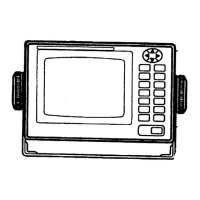Why is my Furuno GPS position wrong?
- Aaustin03Jul 29, 2025
If your Furuno GPS position is wrong, verify that the correct geodetic chart is entered. Also, apply position correction to the GPS position.

Why is my Furuno GPS position wrong?
If your Furuno GPS position is wrong, verify that the correct geodetic chart is entered. Also, apply position correction to the GPS position.
What to do if Furuno GPS position cannot be fixed?
If the Furuno GPS cannot fix a position, check the antenna cable for a tight connection and any signs of water leakage. Also, check if a functional satellite has been disabled.
Defines a potentially hazardous situation leading to death or serious injury.
Defines a potentially hazardous situation leading to death or serious injury.
Defines a potentially hazardous situation leading to minor injury or property damage.
Details the attached warning label and its implications for safe operation.
Illustrates the hierarchical structure of the system's menu options.
Describes the function of each button on the GP-80 control panel.
Explains how to adjust the zoom level on plotter displays for better viewing.
Details how to choose between North-up and Course-up display orientations.
Describes how to move the cursor on the display using the cursor keys.
Covers the process of adding and removing waypoints or event marks on the display.
Explains how to save specific locations on the chart as waypoints for navigation.
Details the methods for selecting a destination waypoint or route for navigation.
Guides users on choosing data fields for the multi-window data display.
Explains how to set and manage alarms for arrival at a destination or anchor watch.
Covers GPS receiver settings including fix mode, satellite status, and smoothing.
Configures data output format and interval for NMEA 0183 and IEC 61162-1.
Instructions for downloading waypoint and route data from a PC via the DATA 4 connector.
Details automatic and manual configuration for receiving DGPS beacon signals.
Procedures for clearing plotter and GPS memory, or both, to reset settings.
Describes how to perform self-tests on memory and input/output circuits.
Guides users through testing the functionality of each key on the control panel.
Provides a definition and overview of the Global Positioning System.
Details the NMEA format for the waypoint arrival alarm sentence.
Explains the DGPS system and its role in refining GPS position accuracy.
Defines the estimated time of arrival at the final destination.
Discusses nautical charts and their relationship with GPS positioning systems.